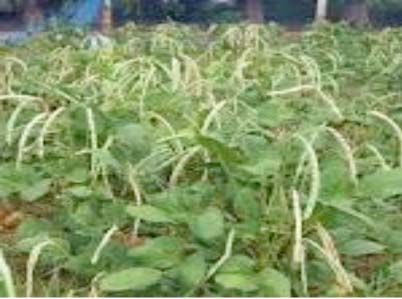
Agricultural
Research study has revealed, especially to the farming community in the Gambia
and beyond, that the use of Cowpea, vigna unguiculata as cover crop is
potential for soil nutrient for sustainable maize and millet production.
Growers
of these crops should therefore, no longer be worried about both the non
availability and the cost of nitrogen fertiliser as this simple experiment can
give them the desired dose of nutrient their maze and millet require when
either is grown with cowpea.
Maize,
millet and other cereal crops are first of all planted during their cultivation
period two to three weeks before cowpea or other cover crops such as groundnuts
including Bambara nuts one planted.
A
research was conducted in two rainfall regimes of The Gambia to evaluate the
potential of these food legumes, which is cowpea cover crop grown at different
population densities.
The
effects on biomass (organic matter used to produce energy) and the seed yield
of cowpea, effects on soil properties and on subsequent maize and millet crops
grown at different densities.
Research
has shown that cowpea biomass and its seed production was plant density
dependant. Nutrients removed in the seed at harvest by cowpea varied with site
and seed production. More phosphorous was accumulated in maize in the wet zone
and more nitrogen by millet in the dry zone, and their depletion over time was
crop and site dependant.
The
Stover (an inferior type of fodder) and grain of maize or millet increased with
plant density in accordance with the yield-density equation, but varied
according to the preceding cowpea biomass or seed.
When
plant density was constant, Stover and grain of maize or millet increased with
constant levels of cowpea biomass or seed.
The
Stover and grain of maize or millet increased with soil nutrients but the
responses varied according to nutrients.
The
information generated from The Gambia which has a short growing season
including improved soils, low farm output, food deficit and increasing human
population.
Cover
cropping impact for improvement in the soil properties concentrating on
nutrient replenishment in this research is paramount because the soils in the
Sahel as a whole have high and low organic matter contents.
Water
infiltration rate is high with nutrients being leached to lower zones. Soil
crusting and hard pan formation at the surface can also occur during wetting
and drying leading to water logging and in some instances, runoff with eventual
nutrient in the eroded material.
To
assess the impact of cover crop on soil physical properties regarding soil
aggregate formation and hydraulic conductivity in the sandy soils of the Sahel
is essential.
This
is due to the fact that the small organic matter concentrations in the soils of
the Sahel are associated with the deficiencies of nitrogen and phosphorous,
coupled with the removal of these nutrients in crops, farm outputs have been
dwindling resulting to production of abundant cover crop residues for livestock
feed and domestic purposes.
The
organic matters built up exhaustion in soils over time, attracting extended
research in cover crops through maintaining the sites and plots in order to
monitor the long term restoration and depletion rate of organic matter in the
sandy Sahelian soils under cowpea and cereal rotations.




